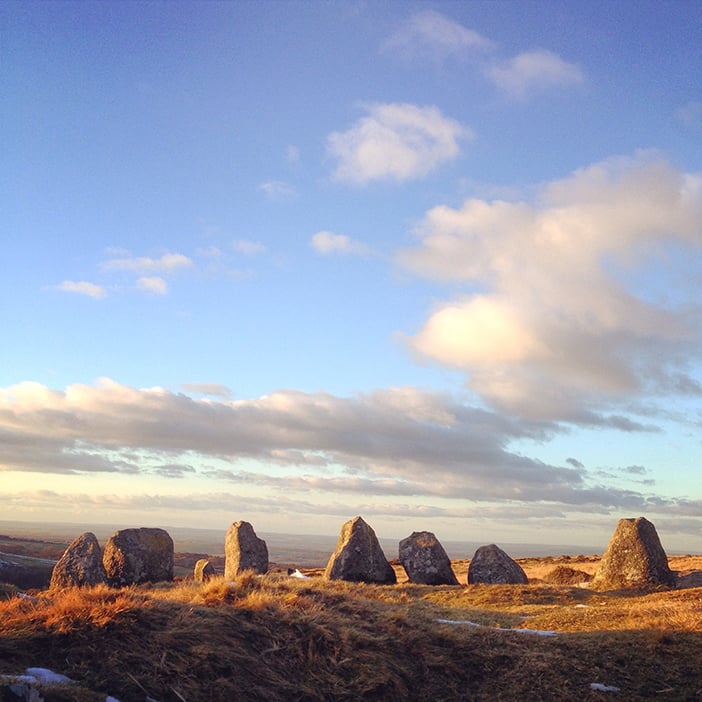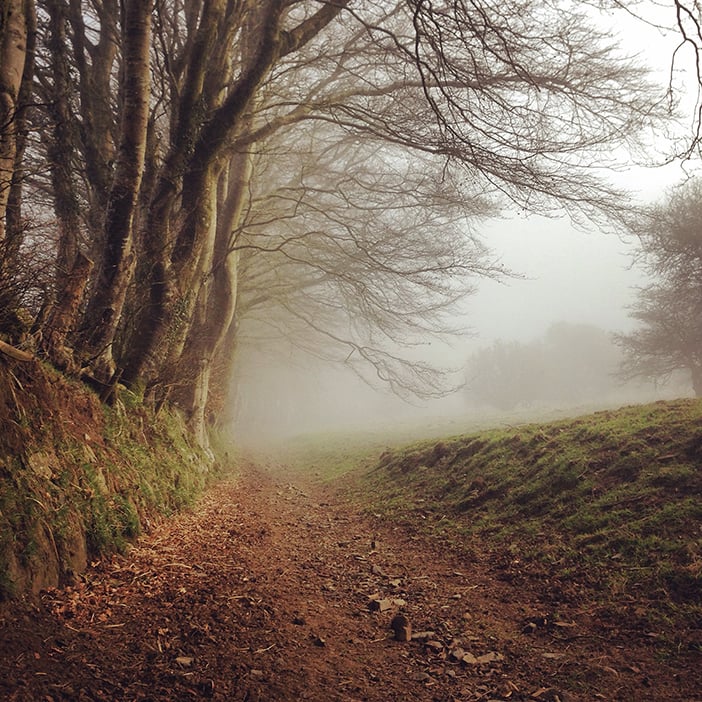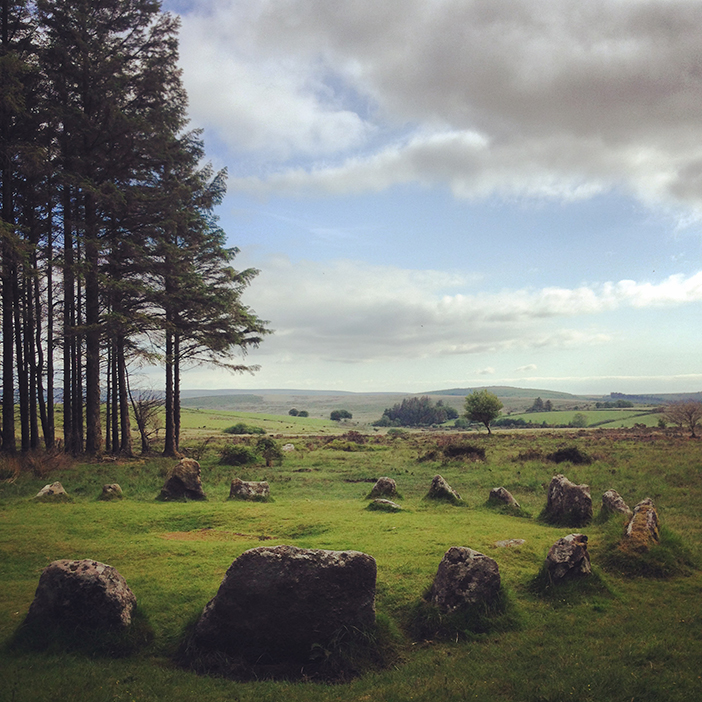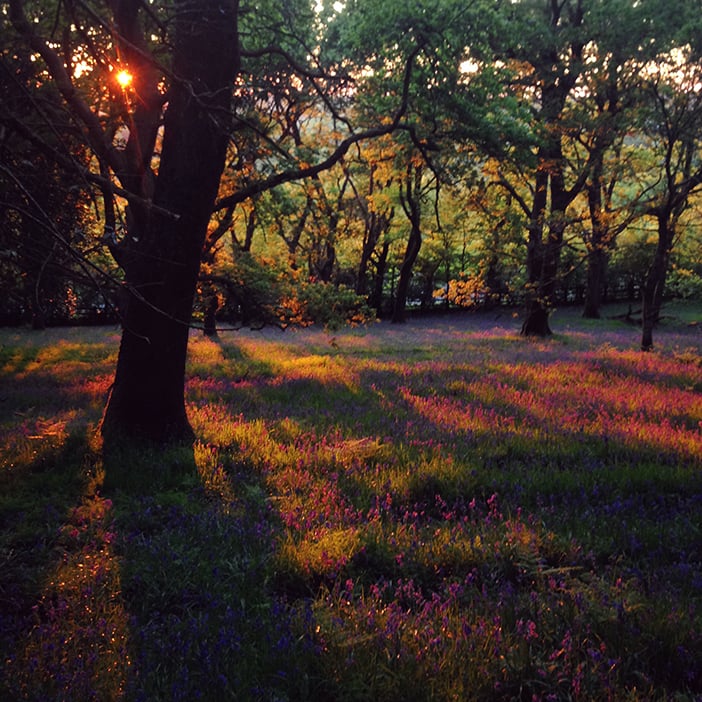Jo Bradford is a professional photographer who lives inside the Dartmoor National Park in the UK with her husband and young family. Her professional work has seen her take portrait and commercial commissions as well as being a Getty contributor. Her stock photography has an enviable list of clients who have licensed her work through Getty, including Disney, Oprah.com, MTV, Conde Nast, Saatchi & Saatchi, etc.
However, it is the work with her iPhone that has been attracting much attention during 2015 ever since she started shooting daily landscape photographs for a 365 project. This project has seen Jo committed to staying local to Dartmoor for an entire year, taking and posting a new photo of the stunning Dartmoor landscape, every day from the 1st January to the 31st December. The results of which she has been posting on her Instagram account that has now amassed a small army of followers and is continuing to grow rapidly.
As a professional photographer, how were you first introduced to the idea of using your iPhone as a camera?
I firmly believe the old adage that “the best camera is the one you have with you”. This is how I found myself shooting more and more imagery on my iPhone, it is always in my pocket, it is lightweight and always easily accessible when I need to get a photo in that moment when the conditions are perfect. iPhone photography has developed into an art form all of its own. With the help of a wide array of free and bought apps, the simple camera in my iPhone has been transformed into a manual camera with a wealth of different control options. I like the fact that with a lens this small and basic, I have to really focus (pardon the pun) my attention on great composition and finding the prefect tonal balance of light and shade, the bones of photography, as it were. In doing so daily, it has made me a far better photographer.
How would you describe your style and approach to your photography?
I am very relaxed about my image making, I let the feel of the place become my inspiration and find that the photos flow thick and fast once I am in the zone. I have been taking photos since I was a small child, and try not to think too much about it. I follow my instincts and enjoy the moment of ‘collecting’ imagery. People often tell me that my work has a painterly quality, I often see that painterly scene before I click the shutter, then I know I have a photo I can use. I search for it daily but don’t always find it.
You are currently undertaking a 365 project, could you tell us a bit about this and what inspired you to undertake such a project with your iPhone?
I live on Dartmoor. While I was on maternity leave in December 2014 with a 3 month old baby and a 2 year old to look after, I found that I was unable to leave the photography alone completely, it’s rather a consuming passion of mine. So on our daily walks I would find myself taking pictures on my iPhone. I thought it would be interesting, challenging and fun to start a 365 photo project for 2015, taking a picture of Dartmoor every day for a year and posting them on Instagram.
Trekking around Dartmoor with 2 tiny children and all the kit required to keep them warm, hydrated and fed, meant that I didn’t have the room to carry big cameras around with me. My iPhone 5 was ever ready and always to hand!
Also there is a real sense of immediacy about whipping a phone out of your pocket and quickly capturing a moment of light in the landscape, without any fuss or set-up, and seconds later when that moment of beauty has passed, you can rest assured you got it. Another factor is that I have really enjoyed a fast workflow from camera to editing on iphone apps and posting via Instagram all takes a few seconds, something that would take me substantially longer on one of my DSLRs. I upgraded from an iPhone 5 to a 6S in November.
What is it that attracts you to the subject of landscape photography and what makes Dartmoor so special photographically?
I had never considered myself to be a landscape photographer, so this year undertaking this project was an opportunity to really put myself out of my comfort zone in one sense. In another sense though, I live on Dartmoor and am constantly aware of the changing light and stunning vistas I encounter even just on a trip to the supermarket. It not only made sense to start photographing this beautiful landscape, it would be crazy not to try to capture it.
What conditions would you say contribute to your perfect landscape photograph and what would that photograph look like for you?
It’s all about the weather for me. I always know that if there is a low lying cloud cover giving a misty edge to the scene, that I will come home with a decent photograph. I love the atmosphere that this kind of weather adds to a photograph, particularly that moment when the sun breaks through the clouds making some of the details in the scene really pop out.
What is your approach to the framing and composition of your landscape photography? Are there any conscious decisions you look to make when framing a scene?
When it comes to framing and composition I work very intuitively. I have never studied much in the way of landscape, but I feel that I just have my own instincts for where to place key details in the image. Obviously there is no denying that the rule of thirds and the golden mean are great guidelines for composition, I often find myself subconsciously using those parameters in my composing of a scene.
What apps do you regularly use and is there a process or methodology that you apply to your post production editing?
I don’t have a favourite app, and when it comes to my workflow it differs every time. Each images presents it’s own set of challenges in processing, and so I use a different combination to realise the image I see in my minds eye. Amongst the apps I use are Snapseed, Filterstorm, Slowshutter, VSCO, Nightcap Pro, 645 Pro, Afterlight and the Luxe filter in Instagram.
Your Instagram account has gathered quite a following from it’s humble beginnings. How have you grown the account and do you have any advice to give others on this?
When I started the instagram project on the first of January 2015, I had under 100 followers, mostly friends and family. Now I have around 50K followers, this grew very organically. I was very lucky to be noticed by Instagram, when they blogged about my work on their feed and then made me a suggested user, I picked up over 40K new followers in a month. I can’t tell people how to achieve that kind of stratospheric growth as it was out of my hands in a way, but I can tell them that it helps if you are posting regularly and making sure that you only post your very best images. My Instagram feed is very tightly themed and all of the images have a strong visual and thematic link to each other and this has been a successful formula for me. Lastly, don’t forget that Instagram is a social community and it’s good to build a rapport with people, you can make friends and support them in their own posts and they will follow and support yours. It’s lovely to be part of such a supportive and friendly community.
It must have been a surprise to grow your following so quickly. What has been the response to your work with the 365 Project?
It took a month or so to get over the stage fright I felt after I rapidly gained 40K followers in a few weeks, every time I took a photo in the days afterwards, I would be momentarily crippled by the thought of all the people who were waiting to see what I posted that day. But I always return to just posting what I love. I firmly believe that it is important to know my own voice and just be authentic and true to myself, the rest will sort itself out.
There has been a fantastic response to the 365 project, I have had plenty of press coverage, and have agreed to exhibit the whole project at the Dartmoor National Park Visitor Centre for several months in Summer 2016. I have recently agreed to be the ambassador for Visit Dartmoor, the official tourism organisation for Dartmoor. I could never have imagined that taking on a project like this would be quite so life changing,
What would be your top tips or words of wisdom for other photographers looking to take better landscape photographs.
Know your environment, time spent on reconnaissance is seldom wasted. Visit the same spot at different times of the day and see how the direction of the light sculpts the landscape. Don’t be tempted to just take the picture where you arrive at a spot and then walk on. Step to one side and take another one, get down to floor level and try one more, take 3 more in other spots. Doing this regularly and then reviewing what you got later over a cuppa (or a glass of wine) will help you learn what works and what does not, it will teach you to expand your field of vision and make you a better photographer because of it.
Connect with Joanne Bradford
www.jobradford.com | Instagram | Facebook | Twitter | Steller














What a joy this interview was to read. Stunning images. I am inspired!
This is all very interesting.I use an iPad & I suppose that all you say about the iPhone can also be on the iPad as they both use the same Apple IOS system.
Am I right with this?
Regards , John Lay